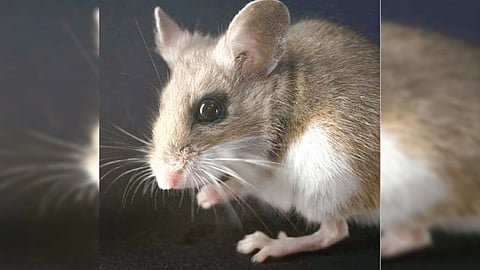

It’s easy to look at a forest and think it’s inevitable: that the trees came into being through a stately procession of seasons and seeds and soil, and will replenish themselves so long as environmental conditions allow. Hidden from sight are the creatures whose labor makes the forest possible — the multitudes of microorganisms and invertebrates involved in maintaining that soil, and the animals responsible for delivering seeds too heavy to be wind-borne to the places where they will sprout.
If one is interested in the future of a forest — which tree species will thrive and which will diminish, or whether those threatened by a fast-changing climate will successfully migrate to newly hospitable lands — one should look to these seed-dispersing animals. “All the oaks that are trying to move up north are trying to track the habitable range,” said Ivy Yen, a biologist at the University of Maine who could be found late one recent afternoon at the Penobscot Experimental Forest in nearby Milford, arranging acorns on a tray for mice and voles to find. “The only way they’re going to move with the shifting temperatures is with the animals,” Ms. Yen said of the trees. “Will personality affect that? Will there be individuals who are more likely to help?”
Yen is a doctoral student in the lab of Alessio Mortelliti, a wildlife ecologist who arrived in Maine nearly a decade ago with a peculiar interest: how seed dispersal intersected with the emerging study of animal personality.
Although researchers already studied the ways that animals move seeds across landscapes, the possible role of their personalities had gone largely unexamined. The Penobscot Experimental Forest, with its 1,800 acres of closely monitored woodlands managed according to various forestry techniques, offered a landscape-scale setting to explore this question.
Each summer for the past seven years, Dr. Mortelliti’s students have trapped deer mice and southern red-backed voles in their study plots — about 2,000 animals in all — and run them through tests that measure where they fall on a spectrum between bold and shy. Before being released, each is tagged with a microchip, not unlike those used to identify lost pets.
The tags trigger sensors, like the one that Ms. Yen had mounted above her tray of acorns. Each acorn was painted with coloured bands to indicate its species: red oak, bur oak, black oak, white oak, swamp white oak, scarlet oak, pin oak, willow oak. Red oak are already abundant in the region, but the other species have arrived only recently or are expected to, as rising temperatures push their ranges north.
Whether these trees succeed in this slow-motion migration — and eventually grace new landscapes with their noble, carbon-sequestering, shelter-providing, wildlife-nourishing presence — will be a function of countless encounters between a mouse or a vole and an acorn.
Does the animal take the nut? If so, is the nut eaten promptly or saved for later? Where does the animal cache it? How often do they fail to return, either because they forget the location or — as so often happens to bite-size creatures in a forest full of hungry predators — because they are eaten first, thus giving the acorn a chance to germinate?
“People see that a forest is regenerating,” Dr. Mortelliti said. “But what people don’t see is that the forest is regenerating following the decisions of small mammals.”
Visit news.dtnext.in to explore our interactive epaper!
Download the DT Next app for more exciting features!
Click here for iOS
Click here for Android